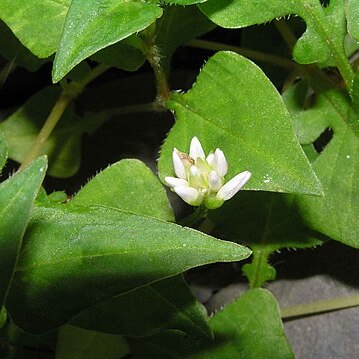Herbs perennial. Rhizomes stout. Stems suberect or ascending, 30-60 cm tall, angulate, pilose or subglabrous, usually nodes retrorsely appressed hispid. Petiole 1-1.5 cm, narrowly winged, base auriculate, upper ones often shortly petiolate or subsessile; leaf blade 4-8 × 2-4 cm, pinnatifid; terminal lobe triangular, large, apex acuminate; lateral lobes 1-3 pairs, smaller, margin shortly ciliate, both surfaces sparsely strigose or glabrous; ocrea tubular, lax, ca. 1 cm, membranous, pubescent, apex truncate, ciliate. Inflorescence terminal, corymbose or paniculate, capitate, dense, 0.5-1.5 cm in diam.; peduncle glandular hairy; bracts narrowly ovate, margin membranous. Pedicels shorter than bracts, slender. Perianth pinkish or white, 5-parted; tepals narrowly ovate, 3-3.5 mm. Stamens usually 8, included; anthers purple. Styles 3, connate to below middle. Achenes included in persistent perianth, black-brown, opaque, ovoid, trigonous, 2-3 mm. 2n = 22*.
More
A small trailing herb. The stems are angled. The leaves have stalks. The leaves are the shape of an arrowhead with 2 unequal lobes. The leaves are 2-18.5 cm long by 1.7-7.5 cm wide. They have coarse teeth. There can be hairs on the mid vein above. The flowers are white or pink and in groups at the ends of the stalks.
A tropical and subtropical plant. In Nepal it grows between 1600-3600 m altitude. It grows in moist, shady places. It often grows near water. It grows between 800-3,900 m above sea level. In Yunnan.

